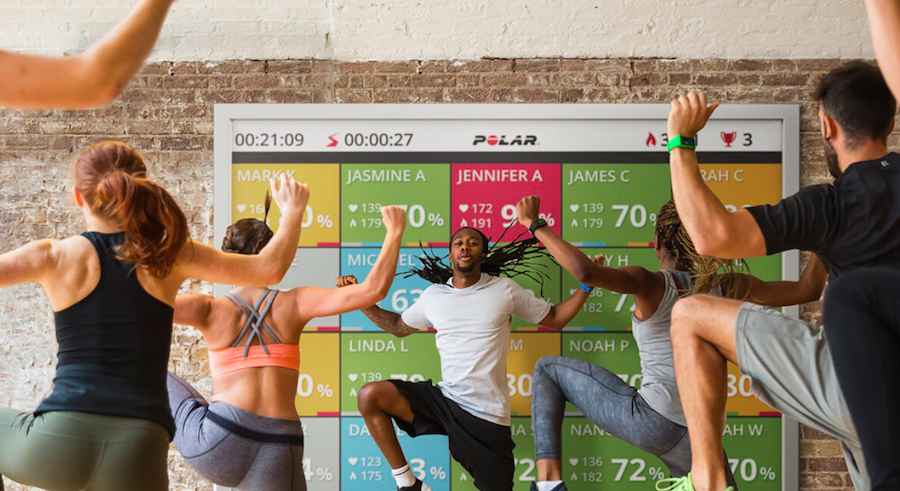The just-released 2018 IHRSA (International Health, Racquet & Sportsclub Association) Health Club Media Report paints a bright outlook on the state of fitness clubs and fitness activities overall.
According to the report, in 2016:
- An all-time high of 57.3 million people belonged to a health club, a 3.6 percent increase from 2015.
- The total number of consumers, (members and non-members) who used a club climbed to a record high of 66.5 million.
- Since 2009, health club membership has grown by 26.4 percent and the number of health club consumers has grown by 26.7 percent.
- More than 57 million members, or 19.3 percent of the U.S. population ages six and older, belonged to a health club, up from 18.8 percent in 2015 and 16.2 percent in 2009.
- Another nine million non-members used health clubs in 2016. In all, 66 million Americans were health club consumers, representing 22.4 percent of the total population.
- Health club/gym/studio visits totaled 5.7 billion in 2016.
The report found that the number of total members and the number of total consumers both grew by more than 3 percent from 2015 to 2016. Even though some may consider this modest growth, findings from the 2017 Physical Activity Council Participation Report show that fitness participation growth is outpacing all other sports and recreational activities.
Since 2011, participation in fitness activities has increased by three percent. Participation is up slightly in racquet sports (1.8 percent), watersports (1.4 percent) and winter sports (0.7 percent), while individual sports are down 4.4 percent and outdoor sports are down 0.8 percent.
At the club level, much of the industry’s recent growth comes from “studios or boutiques.” Collectively, 40.7 percent claim membership in a studio. Still, more than half of health club members report membership in a traditional commercial health club (21 percent multipurpose and 30 percent fitness only).
Total U.S. Health Club visits reached 5.7 billion in 2016, up from 4.3 billion in 2009. Roughly 25 million members (43.6 percent of total membership) report using their club at least 100 times in 2016.
Among genders, while the membership breakdown is nearly equal, men are more likely to belong to traditional facilities, while women are more likely to visit yoga/Pilates/barre studios. Both genders claim near-equal participation in fitness-only and personal or small group training (P/SGT) studios.
Nearly half (45.8 percent) of health club members are between 18-44. The average age of a health club member is 39.
Among generations:
- Those under 18 (Gen-Z) mostly visit studios and niche facilities. HIIT, cardio kickboxing and cross-training workouts rank highest for the youngest segment, with choreographed classes and aquatic exercise rounding out the top.
- Millennials also favor HIIT and cardio kickboxing as well as barre, yoga and group cycling.
- Generation Xers focus on equipment, with ellipticals, cardio cross-trainers, free weights, resistance machines and treadmills topping the list. Boot camp was the only non-equipment-based activity to rank.
- The Boomer and Silent generations preferred aquatic exercise, stationary cycling, stretching, Tai Chi and weight/resistance machines.
Other findings:
- More than 12 million health club members (22 percent) claim membership in more than one facility. Eighty-seven percent of studio members belong to more than one club, and nearly all (98 percent) members of combat-themed studios also belong to more than one facility.
- Membership bumps do jump following New Year’s resolutions in January (10.8 percent of all memberships are sold in the month), but bumps are also seen in May/June just before bathing suit season and in September following the end of summer.
- Classes and training programs continue to outpace equipment utilization. Nearly half of health club members (47.5 percent) participate in class-based group exercise and training.
- Treadmills remain the most-used piece of club equipment (44 percent report using a treadmill). Resistance machines (36 percent) and free weights/dumbbells (31 percent) rank second and third.
- While the overall membership penetration rate across the U.S. was 19.3 percent on average, the top-ten states with the highest penetration rates were: Connecticut, 26.4 percent; Massachusetts, 24.5 percent; Illinois, 23.2 percent; Washington, 22.9 percent; California, 22.6 percent; New York, 22.2 percent; North Carolina, 20.6 percent; Oklahoma, 19.9 percent; New Jersey, 19.8 percent and Utah, 19.4 percent.
Photo courtesy IHRSA
















